What is going on over Taiwan?
Thematic Investors are focused on how the forces of change shape our investment landscape. In the past year, tensions between the USA and China have shifted from a focus on trade to include the military dimensions of alliances, such as the recently formed AUKUS.
Should investors worry? Not yet, but we certainly should pay close attention.
[Note added later: For a revealing and more detailed analysis of KQ-200 anti-submarine warfare aircraft of the PLAN see Olli Pekka Suorsa's article from 4-Nov-2021 entitled "The Anti-Submarine Warfare Component of China’s Sorties in Taiwan’s ADIZ" This study draws essentially the same conclusion: the sortie patterns of ASW aircraft are consistent with refining detection of US and allied submarines transiting the Bashi Channel. That article is much more detailed than my own and worth a read. (From the author: KJ)]
You would have to have been locked away in a cave, to not notice the rising temperature of war commentary concerning Chinese bases in the South China Sea, and regular and increased incursions into the Air Defense Identification Zone (ADIZ) of Taiwan.
Obviously, an increase in tensions to the point of open war would be disturbing. The concept of a large scale conventional war between major state actors has been off the radar since the collapse of the Former Soviet Union (what was the U.S.S.R.). There have been numerous hot wars since, in Iraq, twice, and through many regional actions, plus the Afghanistan war.
How could an escalation of tension to conflict over Taiwan be considered worse?
In our view, it would be much worse, since the scope to contain the conflict to "just" Taiwan, and to "just" conventional weapons exchange seems more limited. The USA is the premier military superpower, but China comes second in military expenditure.
China is modernizing their military, and making considerable inroads on developing a modern and highly effective armed forces package. This is no longer limited to the People's Liberation Army (PLA), but includes the modern PLA Airforce (PLAAF), equipped with stealth fighters, the expanding PLA Navy (PLAN), a missile force named the PLA Rocket Force (PLARF) that packs hypersonic weapons, and a emerging space operations capability, called the PLA Strategic Support Force (PLASSF). Evidently, it is a big show, and the PLA runs it.

The heavy influence of the Army is not that strange. Firstly, China had long been considered to be primarily a land based power, with a strategic interest that stopped at its borders. Secondly, the role of the Army in seeding creation of an Airforce has historical precedent. For example, The US Air Force (USAF) that we know today was founded on 18th Sep 1947. Previously, there was the US Army Air Corps, the US Navy Air Force and the US Marines. All US services operate some form of airpower, even today, because air power is so versatile and effective.

On any contemporary strategic match-off the US military is still the most powerful, and differs greatly from that of other powers in the ability to project power anywhere on Earth.
Nevertheless, the prospects for victory in any war between China and the USA are fraught. The two forces are structured to meet a range of threats, and so are peers, but China has nowhere near the same military experience in diverse theatres of war. From the other side, the USA has not faced an adversary the likes of China since the end of the last Cold War. China has driven hard in military R&D to pursue asymmetric capabilities in hypersonic missiles and sensors, such as drone platforms, to better interdict and defeat intruders in their own near space.
These are two tigers best left on opposite sides of the mountain.
In this case, the metaphorical mountain is the Taiwan Strait that divides the Republic of China (ROC) Taiwan from the People's Republic of China (PRC). Shown below is a typical Taiwan Ministry of Defense (MND) map of PLA Aircraft incursions into the ADIZ space, with the median line shown as a point at which the incoming aircraft fly to, and then return.
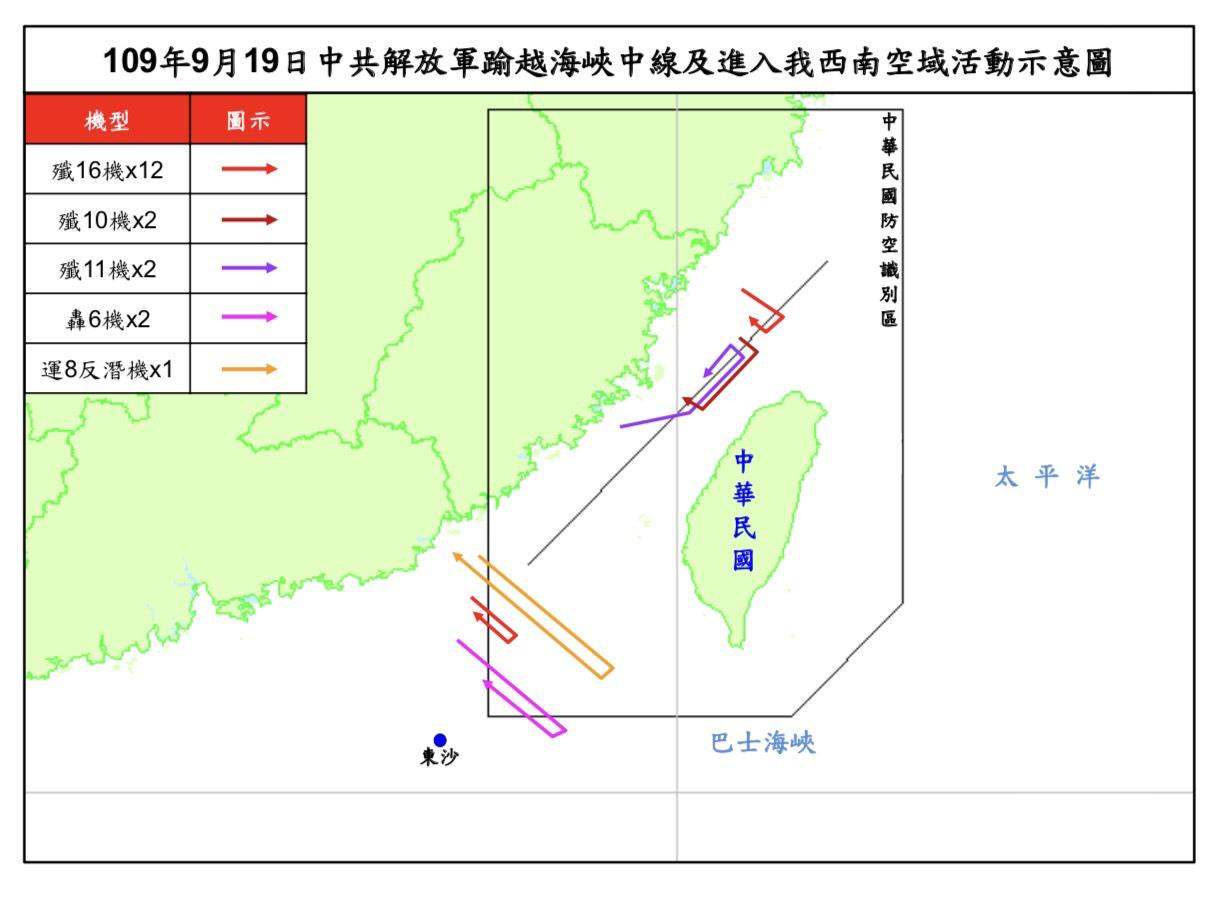
Our focus here is on the likelihood of military conflict, and to what extent the recent activity of Chinese military aircraft might signal intentions. For now, our analysis, of commentary in the Open Source Intelligence (OSINT) community, suggests that the PLA services are certainly pursuing an elevated profile for domestic propaganda purposes.
However, we interpret the pattern of aircraft flight paths, and the mix of aircraft employed, as more indicative of a building Chinese fear than of an imminent Chinese threat. The central issue is submarines, both Chinese and US.
The important element to understand is the geography of the Chinese mainland, as it meets the principal waterways through which much of global trade flows. These are the East China Sea to the west of Japan, and the South China Sea, bordered by many nations, including Vietnam and the Philippines. Taiwan sits smack in-between both of those two seas.
Some years ago, China declared its claims in the South China Sea extending over a vast area up to the so-called nine-dash line that borders close to the Philippines (Source: BBC News, “Q&A: South China Sea dispute”). Since the construction of artificial islands, the zone has become militarized, and is now a major focus of US Military concern.

The territorial claims made by China were disallowed in a tribunal of The Hague, which has been the source of the rising international tension, leading to the Freedom of Navigation exercises involving the United States, Australia, the United Kingdom, and others.
With the advent of the AUKUS alliance between Australia, the United States and the United Kingdom, there was a clear shift of emphasis in commentary. The strategic rationale for an Australian purchase of nuclear submarines has been pitched about the need to operate for longer patrol periods, over much longer ranges, as far away as the South China Sea.
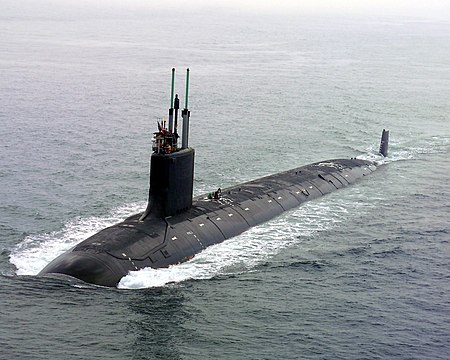_returns_to_the_General_Dynamics_Electric_Boat_shipyard.jpg)
On the face of it, there is no obvious reason why Australia should be operating on a prolonged basis in the South China Sea. Much trade flows through that region, but a great deal of that is shipping destined to and from China. Australian exports of iron ore travel via sea lanes that traverse sections of the South China Sea. If we set aside the geopolitical heat on China as a threat, it is not clear why they would be a threat to shipping destined for their own ports.
In strategic matters, there are the "nice to haves" and the "must haves". When we first parse the AUKUS decision, in respect of nuclear powered submarines, the "must have" is not clear. There is a clear uplift in Australian capability, but will that make the nation more secure? There is also the possibility that our own move is met with a counter-move that increases security risk.
Australia, along with its strategic partners, has been prepared to tear up a former strategic partnership with the French, and become the first non-nuclear weapons state to build and operate a nuclear powered submarine fleet. The proposed Australian submarine will likely be derived from the US Virginia Class, or the UK Astute class, according to analyst H.I. Sutton, as reported in recent article in Naval News, as indicated in the infographic below.
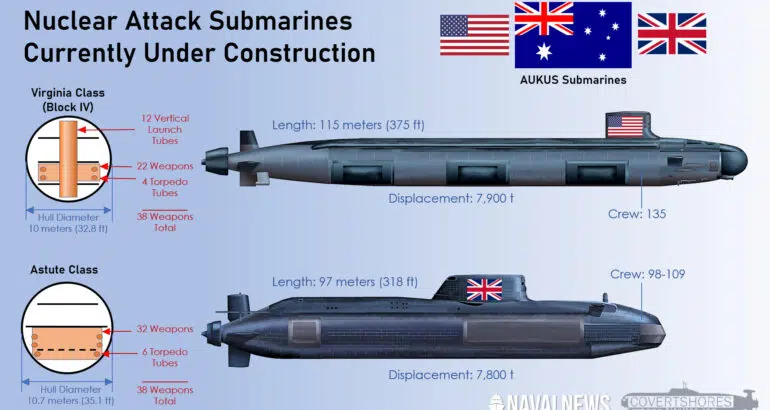
Note that there has been no suggestion that Australia will ever adopt nuclear weapons, just the use of nuclear powered submarines. However, it is still a big step, and sends a message.
Arguably, all nations with interests in China-based trade have some interest in whatever might happen in the South China Sea. Certainly, China has not budged one iota in the vehemence of the territorial claims it has made concerning the South China Sea, and Taiwan reunification.
However, as investors, we must ask:
Why all this commotion over one strategic patch of water and why now?
There are the obvious answers, to do with natural resources, but the recent strategic signal, from AUKUS, regarding the role of submarines, should cause us to reflect and dig deeper.
The central question before us is whether there is more going on with Taiwan, the East China Sea, the South China Sea, and the evident build-up in Chinese military power.
We think there is, and that the answer is not found at the surface, but lies beneath the waves. The issue, we think, is submarine navigation.
For reference, the height of US-Soviet Cold War tensions revolved around two simultaneous forms of nuclear threat, and the calculus of Mutually Assured Destruction (MAD).
There was the direct, or first strike threat, of nuclear weapons that are delivered by aircraft or Intercontinental Ballistic Missiles (ICBM). This was backed up by the secondary, or survivable second strike threat, of retaliatory nuclear weapons carried by a stealthy submarine force.
The Cold War may be forgotten now but it very nearly became very hot. The most famous such incident was the Nuclear False Alarm Incident, of 26th September 1983. On that day there was a sensor fault in the Russian early warning system. One of their satellites detected an infrared flare that looked like a US ICBM launch. Despite standing orders to launch, the commanding officer in the Russian missile early warning system, Stanislav Petrov, twice rejected the computer signal to launch because he believed the signal to be a false positive.
Had Stanislav Petrov followed standing orders, Russia would have launched a salvo of nuclear tipped ICBMs, and the USA would have almost certainly launched a counter-attack. Stanislav Petrov has since earned the titled of: The Man who Saved the World.

In the ensuing chaos, the respective submarine fleets would likely have followed suit.
It is sometimes said that Ronald Reagan was so influenced by these events, and the close call that followed, that he was much receptive to Mikhail Gorbachev in the pursuit of Perestroika. Eventually, as we know, the Soviet Union collapsed in 1991. Since that time there has been a progressive loss of cultural memory concerning the reality of the nuclear threat.
The missiles are still out there, ballistic missile submarines remain a mainstay of deterrence, and, to make matters more current, the nuclear arsenals are now up for modernization.
China is expanding its nuclear arsenal, but with the expiry of many nuclear weapons limitation treaties, so too will other nations. The US Minuteman III arsenal is now up for renewal with the new Ground Based Strategic Deterrent (GBSD) program.
While controversial, and still unclear, the USA may well commit to re-equip Tomahawk cruise missiles with nuclear warheads. There was a Biden Defense R&D budget appropriation:
“Project 3467: This project will design, develop, produce and deploy a Nuclear-Armed Sea-Launched Cruise Missile.”
which looked to be the "go" decision on a Nuclear Submarine Launched Cruise Missile. This project may since have been defunded, but there is interest to equip the US Virginia Class attack submarines with a nuclear-tipped cruise missiles.
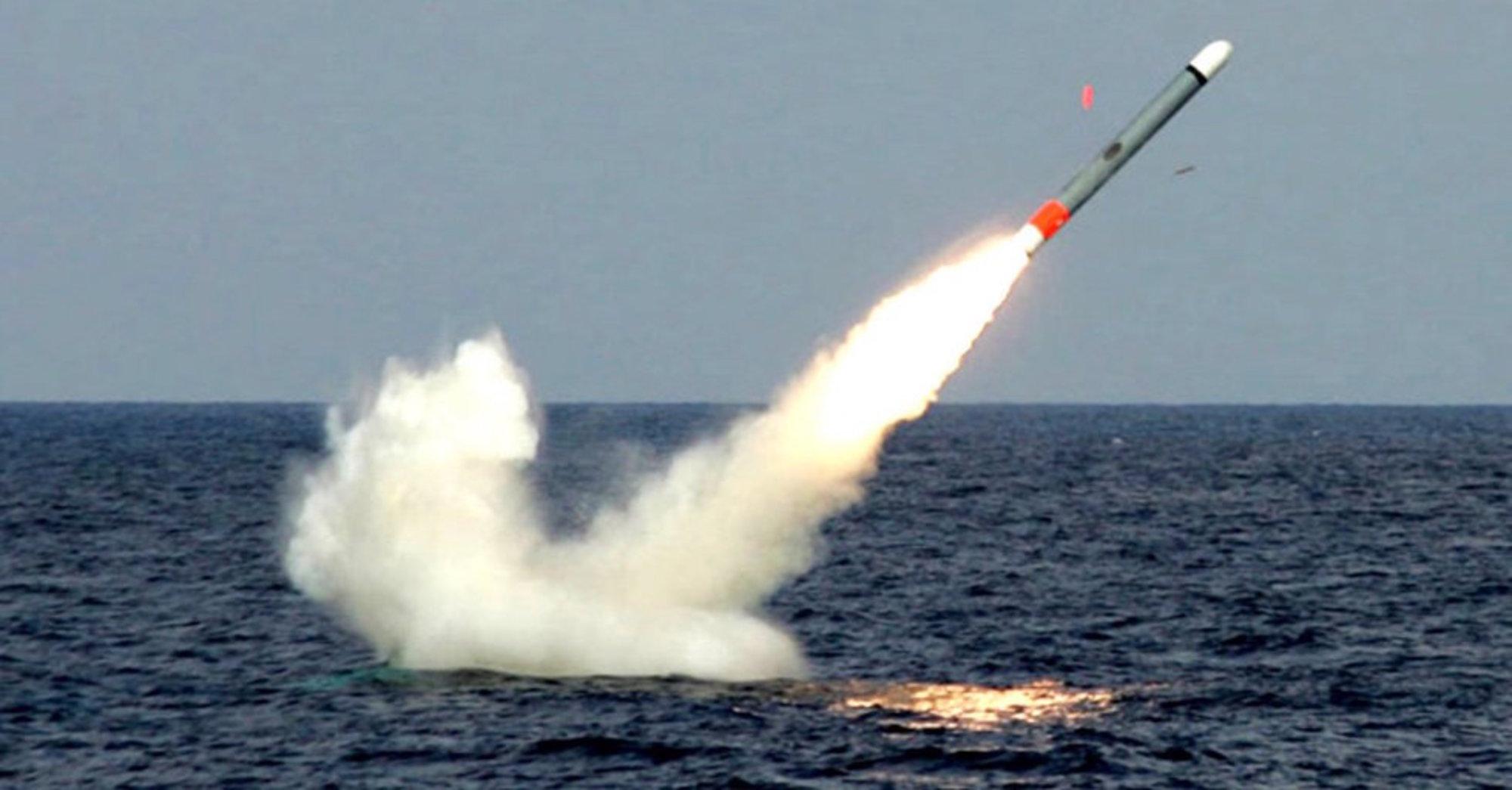
Note that the USA already fields a large fleet of nuclear powered ballistic missile submarines armed with high explosive yield ICBMs. Adding nuclear-tipped submarine launched cruise missiles would expand the US capability, but at shorter-range and lower yield.
In the parlance of defense analysts, these are tactical nuclear weapons. The primary utility of such a weapon is to attack military targets. In contrast, a strategic nuclear weapon plays the role of a primary deterrent, in proposing, via the logic of MAD, the destruction of cities.
Neither option seems very palatable, but they are with us, and for a long time now both families of nuclear weapons were strictly controlled by treaties.
It may seem odd today, but the treaties concerning tactical nuclear weapons were generally a lot more stringent. This is because short-range and low yield nukes have been considered to be a greater threat in the propensity of use. Military commanders might well be more likely to actually use a tactical nuclear weapon, which then poses a serious risk of escalation.
Needless to say, nuclear weapons have only been used in war once, so far. The Cold War of the past showed us that the risks of accident, or misunderstanding, were real, and that security depended as much on arms control treaties and clear communication, as it did on force.
If we fast forward to now, the importance of submarines in the near coastal approaches to any nation state becomes much clearer. A conventionally armed attack submarine can certainly launch a cruise missile based attack on military targets in, the course of war. However, nuclear powered submarines can generally loiter for long periods in a stealthy fashion.
Nuclear armed ballistic missile submarines can lurk silently, off the continental shelf, in deep waters, and thus be equipped to launch Submarine Launched Ballistic Missiles (SLBM).
The strategic balance of deterrence can change significantly when a nuclear nation like China starts to expand its Navy around the same time as other nations, like the USA and Russia, are winding down the various strategic arms limitation treaties, and reduction treaties, that were negotiated during and after the last Cold War. Add in the technology dimension of disruptive innovation in battlefield sensors, artificial intelligence, hypersonics, and space, and we have the potential for strategic competition between the USA and China to get very dangerous.
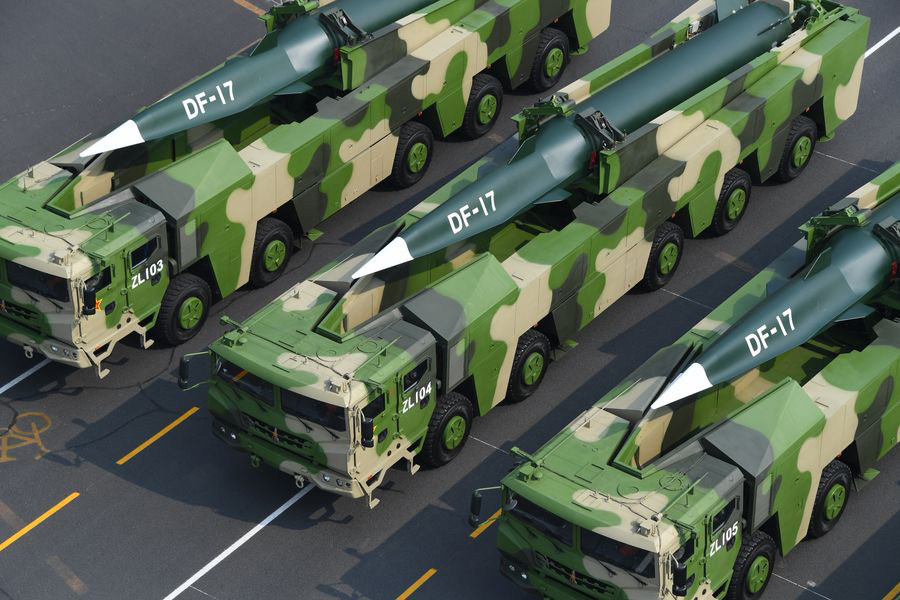
Evidently, we cannot approach the prospect of conventional war between China and the USA in breezy fashion. If there were war, it is entirely unclear that any war could be contained. The prospect of an apparently regional conflict over Taiwan proceeding quickly to a much wider naval and air engagement in and around the South China Sea is clear.
Since the South China Sea has deep waters bordering shallows, in which submarine operations are very challenging, we might expect China to be particularly concerned about a high activity level of submarines in near coastal waters. The same is true of the USA, which limits data gathering activities in its near shore seas.
Submarines remain stealthy, and undetected, to the extent that they are quiet, making as little noise as possible, and to the extent that their sonar systems are able to make sense of what surrounds them. The US Navy are the unchallenged leaders in sonar technology, since they have made strenuous efforts to improve this, alongside wide operational experience.
The way sound travels in water depends on many factors, and is affected by simple variations like temperature and salinity, which alter the speed of sound, as well as reflection patterns from the sea surface, or a rocky bottom, combined with blanket like absorption of sound in water-borne biological matter, or something simple like a sandbar.
These features of sound waves cause them to bend or reflect in ways that can readily disguise the true direction or depth of the source. Other sources of interference are the sounds made by biological agents like schools of fish, whales or even a swarm of prawns.
Figuring all of this out requires a big investment of time and effort in developing databases on the local conditions of operation, and calibrating sensors to account for these. Even if there were no signs that China was active in this area, prudence would dictate they should be.
In addition to sonar, there are other detection methods for submarines that use various forms of Magnetic Anomaly Detection (MAD), or Synthetic Aperture Radar (SAR), to pick up various tells for the presence of a submarine. This may be the residual magnetic signature of the hull or some surface feature of the ocean that is analogous to the wake we see behind a ship.
Obviously, China is pacing the USA in developing these capabilities. Therefore, we should see significant activity on their part to develop anti-submarine warfare platforms and methods.
Let us now pull these observations together into an overall thematic viewpoint.
Firstly, the China claims in the South China Sea may speak to their fears of what may well lie beneath the waves in the close shore environment. This cuts both ways. China would clearly like to dominate submarine operations in these waters, but so too will the USA and its allies. There is a clear strategic importance that attaches to submarine traffic into the South China Sea, as well as out of the South China Sea. An incoming US Attack Submarine represents a possible land attack threat to the Chinese mainland. An outgoing Chinese Jin-class ballistic missile submarine represents a possible threat to the US mainland, if it were to assume a station somewhere beyond the mid-Pacific. That is the calculus of deterrence.
Secondly, the build up of Chinese military capability could well pose a threat to Taiwan, and possibly beyond. The Chinese have not made clear their ultimate intentions, beyond the oft made statement that they seek a "world-class military". Clearly, there is strategic rivalry with the USA, and this is well reciprocated in US statements of future military doctrine.
Thirdly, the islands of Taiwan are situated right in the strategic hot zone, separated from the Chinese mainland by the narrow Taiwan Strait. The location of the island is at the apex of two strategic sea lanes that are natural choke points on PLA Navy traffic into the Pacific.
These are the Bashi Channel, which links the Pacific to the South China Sea, and the Miyako Strait, which links the Pacific to the East China Sea. Whether above, or below, the waves, the PLA Navy forces, and the US Navy forces, are likely to use these routes into and out of both seas, which are the key navigable routes into and out of Chinese ports.
The map below is from a Taiwan English News report: US military aircraft operating south of Taiwan point to possible submarine activity. The flight patterns are likely US aircraft on a mission to track potential Chinese submarine activity in the Bashi Channel.

This is a common target for strategic analysis. A USCC report from 2018, entitled Chinese Air Force’s Long-Distance Training over Water, includes this flight track analysis of PLA training mission routes over both the Bashi Channel and the Miyako Strait.

Notice how the pattern of flight paths contains Taiwan but is typically aligned with sea lanes that provide access to the Pacific beyond the so-called First Island Chain.
Evidently, the geography and underwater topography of this region plays a strategic role that is above and beyond the question of what resources lie in the waters of the South China Sea. The sea lanes that govern access to the Pacific Ocean are more critical for strategic deterrence, than are say, the narrower sea lanes of the Strait of Malacca, that links to the Indian Ocean.
However, in an environment where India appears as part of the Quad, the passages toward the Indian Ocean assume strategic importance beyond trade. Once we understand how the calculus of submarine-based nuclear deterrence works, the source of friction is made clear.
What then of the recent incursions into Taiwan's Air Defense Identification Zone (ADIZ)? What is an ADIZ anyway, and why should anybody care?

The above map, shows the Taiwan ADIZ in the lower left alongside others. Such zones started with the US and Canada in 1950, and serve to establish a legal right to impose conditions on the entry to sovereign airspace. They are essentially a buffer zone with the requirement to provide identifying information, and some indication of flight plan.
A recently published flight plan mashup, by Twitter analyst CIGeography shows how the recent pattern of PLA incursions into the Taiwan ADIZ relates to the Island and territorial waters. The pattern is reminiscent of the USCC report mentioned above. Moreover, when one digs into the composition of the PLA strike package, it involves a combination of fighter jets, airborne early warning aircraft, strategic bombers and anti-submarine warfare aircraft. The sorties have been increasing lately, as has been the number of aircraft employed (Image Source: CIGeography).
While these are matters of concern, we should note that the aircraft tracks above, along with the presence of anti-submarine warfare planes, is consistent with Chinese probing of the sea lanes leading to the Bashi Channel. Indeed, some sorties were much longer than others, and make a dog leg to the east towards the lower boundary and out of the Taiwan ADIZ. These flight patterns seem consistent with missions to locate and track submarines.
These incursions provide propaganda value to the Chinese domestic audience, and they exert pressure on Taiwan, but they are not indicative of an imminent move towards a war footing. If anything, these moves underscore the perceived importance of submarine operations.
Should there be any clear sign of an onshore build-up of Chinese maritime and army forces for the purpose of mounting an invasion, we would adopt a more active view on the risk. However, for now, this looks a lot like the typical pattern of Cold War strategic stand-off.
This is not the time to discuss investment opportunities, but we do not think that investors need duck for cover in the face of the elevated levels of risk commentary.
The better course of action is to study the pattern of action from both sides, and remember that the previous Cold War lasted from 1946 to 1991 without a catastrophic conflict.
(Title Image Source: Taiwan Ministry of Defense photo of PLA Y-8 anti-submarine warfare plane operating inside the Taiwan Air Defense Identification Zone)
Note Added After Publication
Since I first wrote this piece in Oct-2021, I came across this article in The Diplomat.
This article comes to a similar conclusion.
The conventional narrative frames Taiwan as the target of Chinese air incursions. By contrast, the median incursion type, including the most frequent intruder, the KQ-200, demonstrates clearly that these incursions have a rationale beyond Taiwan. The KQ-200 sorties, for example, most likely represent the PLA’s actual strategic and operational interests in monitoring foreign warship movements, not least U.S. aircraft carrier strike groups entering or exiting the First Island Chain through the Bashi Channel. Similarly, the PLA has a great interest in trying to find and “prosecute” U.S. SSNs entering the South China Sea or the Taiwan Strait via the Bashi Channel and the South China Sea Slope.
That analysis was published in The Diplomat on 4-Nov-2021, just a few weeks after this note.
The author Olli Pekka Suorsa provides considerably more detail, but the general conclusion is the same. These ADIZ incursions are most likely connected with ASW operations of the PLAN.
That article is well worth a read.
3 topics

